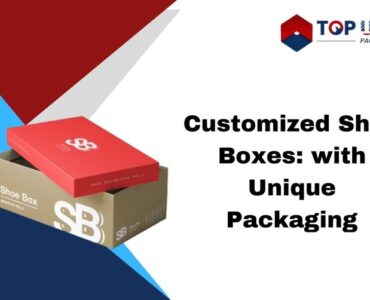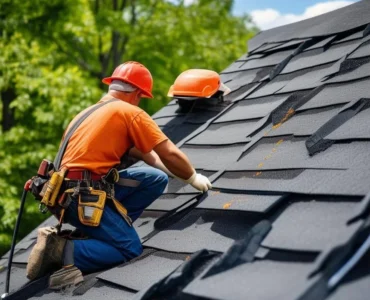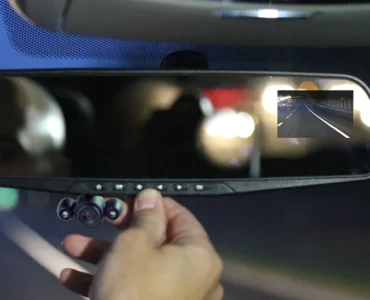Las Vegas is one of the world’s top destinations for trade shows, boasting a vast array of venues, resources, and opportunities for businesses to showcase their products and services. However, attending or exhibiting at a trade show in Las Vegas can be a significant investment. To ensure a strong return on investment (ROI), it is crucial to have an effective strategy, from the design of your booth to the marketing and post-show follow-up. Here are key factors to consider for maximizing your ROI when participating in a Las Vegas trade show.
1. Understand the Audience and the Trade Show
To maximize your ROI in any trade show, particularly in Las Vegas where the competition is fierce, understanding the audience is essential. Trade shows vary widely in focus, from industry-specific events like the Consumer Electronics Show (CES) to niche events for smaller sectors. Before planning your exhibit, spend time researching the demographics of the attendees. Are they decision-makers? What are their pain points? How are your competitors positioning themselves?
The better you understand your audience, the more targeted your trade show strategy can be. Understanding the event’s overall vibe and flow helps too. For example, the CES tends to attract high-tech, cutting-edge exhibitors and an audience looking for innovation, so your booth needs to reflect that culture if you plan to stand out.
2. Design an Eye-Catching Booth
A well-designed booth is at the core of a successful trade show exhibit. Your booth needs to grab attention while also conveying your brand’s message clearly and effectively. Here are some key design considerations:
- Visual Impact: trade show exhibit companies Las Vegas are often in massive convention centers with hundreds or even thousands of exhibitors. To maximize your ROI, your booth must stand out. Eye-catching designs, bold colors, and clear signage are essential. Your brand logo and message should be visible from a distance. A striking visual display, such as a large video wall or an interactive touch screen, can draw attendees in.
- Space Utilization: Trade show booths come in all sizes, from small 10×10 setups to large island exhibits. Maximizing your use of space is key, whether your budget is limited or you have room to sprawl. Consider how you’ll guide traffic within your booth, and create defined areas for demonstrations, consultations, or meetings. A cluttered space can confuse attendees and detract from your message.
- Engagement Features: In an increasingly digital age, people are drawn to interactive elements. Incorporating tech features such as AR/VR experiences, live demos, or gamification can increase visitor engagement. For example, a VR experience can help you show off large-scale products or services in a confined booth space. The more time people spend at your booth, the more likely they are to form a connection with your brand.
- Comfort: Las Vegas conventions often last multiple days, and attendees spend hours walking around. Offering a space where they can sit, relax, and have a drink could make your booth more inviting. Comfortable seating, refreshments, and a calm, welcoming atmosphere can help make your booth a popular stop.
3. Pre-Show Marketing and Networking
Your success at a trade show starts long before the event itself. Pre-show marketing is crucial to ensure that attendees know where to find you and why they should stop by your booth. A well-executed marketing campaign can drive traffic to your exhibit and ensure that you’re connecting with the right people.
- Email Campaigns: Use email to reach out to existing clients, leads, and potential customers. Let them know that you will be at the trade show, and offer a compelling reason to visit your booth. Whether it’s a product demonstration, a giveaway, or a consultation, give them a reason to engage with your brand.
- Social Media: Las Vegas trade shows, especially larger events, often have robust social media followings. Use relevant event hashtags and post regularly on your social media channels to build anticipation. Share teasers of your booth design, giveaways, or new product launches. Encouraging your followers to engage with your posts or share them can expand your reach significantly.
- Personal Invitations: If there are key industry figures or potential clients that you want to meet, don’t hesitate to reach out directly. A personalized invitation can make a big impact and ensure that the right people visit your booth.
4. Effective On-Site Execution
Once you’re at the show, maximizing ROI comes down to how well you can execute your plan on the trade show display design floor. Here are several important factors to focus on during the event:
- Staff Training: Your booth staff is the face of your brand. They need to be well-trained, friendly, and knowledgeable about your products or services. Invest time in training your team on how to engage visitors effectively, qualify leads, and provide useful information. Staff should know the flow of the booth, how to operate any tech elements, and be able to answer frequently asked questions.
- Lead Generation: Collecting leads is a key component of maximizing ROI. Whether you use traditional methods such as business card drops or digital tools like lead scanning apps, ensure you have an organized system in place to capture contact information. Create a qualifying system so your team knows which leads are worth following up with immediately, and which are longer-term opportunities.
- Engagement and Interaction: Your booth design and technology should encourage attendees to engage with your brand. Live product demonstrations, interactive displays, or workshops can draw visitors and give them hands-on experience with your offerings. The more engaging your booth, the more likely attendees will remember your brand long after the show is over.
- Giveaways and Promotions: Giveaways can be an effective way to attract traffic, but they should align with your brand and objectives. Instead of generic freebies, consider offering branded items that people will use or keep, reinforcing your brand message. Additionally, promotions like prize draws or discounts for those who attend your booth can create a sense of excitement and urgency.
5. Post-Show Follow-Up
The trade show doesn’t end when the convention doors close. In fact, the follow-up process is arguably one of the most critical aspects of ensuring a strong ROI. Many businesses fail to follow up promptly, missing out on the opportunity to convert leads into sales.
- Timely Communication: Ideally, follow up with your leads within a few days of the event. Thank them for visiting your booth and remind them of the key points you discussed. Personalize the follow-up wherever possible, referring to specific conversations or interests.
- Nurture Leads: Not every lead you gather at a trade show will be ready to buy immediately. Implement a lead nurturing strategy to keep your brand top-of-mind. This could include an email drip campaign, periodic updates, or targeted offers based on the lead’s interest level.
- Evaluate Results: After the event, evaluate the ROI by assessing the leads generated, sales closed, and overall brand exposure. Compare these metrics to your trade show costs. Did you meet your goals? What could be improved next time? Use this data to refine your approach for future shows.
6. Use Analytics to Measure Success
Analyzing the success of your trade show participation is essential to maximizing future ROI. There are various metrics you can track:
- Lead Conversion Rate: How many of the leads collected at the show turned into customers? Tracking this metric helps you understand how effective your lead-generation efforts were.
- Cost per Lead: Divide the total cost of your participation (including booth design, travel, staffing, and other expenses) by the number of leads generated to determine your cost per lead. This will help you gauge the efficiency of your investment.
- Customer Lifetime Value (CLV): Consider the long-term value of customers acquired at the trade show. A customer who makes a single purchase may provide immediate ROI, but a customer who makes multiple purchases over time contributes to a higher CLV.
- Engagement Levels: If you used social media, website tracking, or lead capture tools, assess how many people engaged with your content. This could be measured through clicks, likes, shares, or booth visits.
Conclusion
Las Vegas trade shows offer immense opportunities for businesses, but they also require significant investment. To maximize your ROI, focus on booth design, pre-show marketing, on-site execution, and post-show follow-up. By understanding your audience, creating an engaging booth experience, and using effective lead-generation and follow-up techniques, you can make the most of your trade show participation and ensure a strong return on investment. With the right approach, Las Vegas trade shows can become a powerful driver of business growth.




